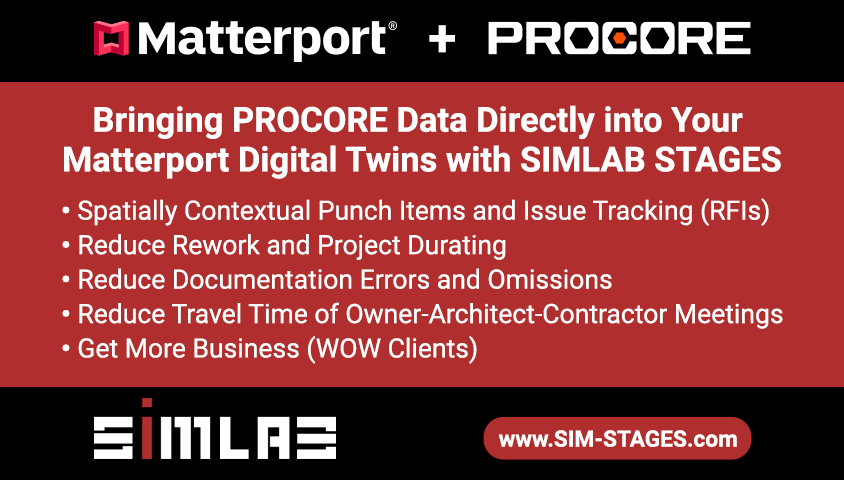[R&D] Magic Leap + MP + Google Earth Studio mash-up8732
Pages:
1
 Tosolini TosoliniProductions Bellevue, Washington |
Tosolini private msg quote post Address this user | |
| I'd like to share our latest exploration targeting the Real Estate industry: in this video we combined Matterport 3D data with Google Earth Studio animations into an interactive experience running on the new Magic Leap mixed reality headset. Special thanks to our VR designer Michael Gelon for another immersive technology mash-up. #AR #MR |
||
| Post 1 • IP flag post | ||

|
Shakoure private msg quote post Address this user | |
| @Tosolini Awesome machinations... Would you guys care to share the process for generating the mashup? I'd be happy to have a call-in to learn more from you guys. | ||
| Post 2 • IP flag post | ||
 Tosolini TosoliniProductions Bellevue, Washington |
Tosolini private msg quote post Address this user | |
| @shakoure I asked our XR designer Michael Gelon to describe his workflow for this project, as I think it might help others learn what's behind the scenes. Tosolini - Magic Leap // Matterport // Google Earth Studio // Unity - Breakdown (1) Magic Leap Development with Unity3d and Lumin SDK: https://unity3d.com/partners/magicleap The first step was to understand how to export apps from Unity onto a Magic Leap device. Once I could export an empty scene, I started examining the sample projects. I took the sample project that was closest to what I wanted (Raycasting), and extended it to handle placement and movement with my own objects. With this complete, I focused on the content. (2) Google Earth Studio: https://www.google.com/earth/studio/ I signed up for beta access and heard back within a few days. I searched for the address of the Matterport model we chose and followed one of the basic motion templates. I tweaked values and added a tracking point. When exporting the video, I checked the box to include tracking data, which gave me a scripting file to recreate the camera movement within After Effects. Once in AE, I used standard motion graphic techniques to add the placement marker, expanding ring, and title card. I also hand masked some of the building edges to make it look like the red marker was really sitting within the environment. The .mp4 was ready to be imported into Unity and plastered onto a plane object. (3) Other Content I took a screenshot of the property from google maps and created my labels in Photoshop. I also took the outline of the Matterport model and created a custom low-polygon 3d-casing for the space (duplicated 3 times for the 3-story building). The cars and people came from the asset store in order to save time. (4) Optimizing the Matterport Model Matterport creates .obj files that are highly unoptimized for real-time engines. They come with too many separate meshes and materials to be efficient in Unity. First, I take models into Blender and join them into a single object. I then remove duplicate vertices and decimate the model until it is under about 30,000 verts. Next, I bring it into Unity and use Mesh Baker from the asset store to compress the many textures into a single file. Generally, I can reduce draw call count from around 100 to roughly 1. (5) Organizing the Unity Scene The entire display is parented to a single Unity game object. I started with the platform and tried out a few content arrangements. I settled on a glass case with two map walls. I initially had the building coming out of a map on the floor, but it didn't look clean enough. Instead, I added in the road (5th Ave) in the real-world position and placed simple cars as a visual and branding interest. (6) Shader Effects I used Advanced Dissolve from the asset store as the basis of my reveal mechanic. I set it up to use invisible plane objects that I could control to hide/reveal most of the other objects. Any time you see a green line in the experience, it represents one of the invisible objects moving along a path. (7) Animating the Scene I used DOTween Pro from the Asset store to handle most of the movement here. I think the count came to 33 moving parts for this experience (not including the cars and people). I set up a 20 second sequence of events that I could trigger at will from the controller. The cars and people run on infinite loops with their paths. (8) Final Steps At this point, I had all of the content, framework, placement, animations, and effects solid. I tested in the Magic Leap Simulator (Lumin SDK) before building a copy to the actual device. This was crucial in adjusting the scale to match real-world conditions. After fixing a few visual glitches, I was able to re-export into the version that I used to create the video (using the device’s built-in recording functionality). In retrospect, I would call this a volumetric motion graphic. Interactions were not a focus at this stage |
||
| Post 3 • IP flag post | ||
Pages:
1This topic is archived. Start new topic?
















